Climbing Nightshade, Bittersweet Nightshade, Woody Nightshade, European Bittersweet, Fellenwort, Blue Nightshade - Solanum dulcamara
|
Solanum dulcamara - Climbing Nightshade, Bittersweet Nightshade, Woody Nightshade, European Bittersweet, Fellenwort, Blue Nightshade. Introduced from Europe, this plant is now found in much of the United States. It is a member of the Solanaceae family, which contains many edible plants, such as the potato, the tomato, and some peppers, but also includes some quite poisonous plants such as Belladonna (Atropa belladonna.) The Solanum genus itself (the Nightshades) contains potato and tomato, and some parts most plants in the genus (the potato included) are poisonous at different times in their life-cycle. The leaves and unripened berries of Solanum dulcamara are said to be somewhat poisonous, although the bright red, ripened berry is reported to be edible in small quantities - but don't eat any part of this plant based on my say-so!
Found in:
CA, CO, CT, DC, DE, FL, GA, IA, ID, IL, IN, KS, KY, MA, MD, ME, MI, MN, MO, MT, NC, ND, NE, NH, NJ, NM, NV, NY, OH, OK, OR, PA, RI, SD, TN, UT, VA, VT, WA, WI, WV, WY | 
Distribution of Solanum dulcamara in the United States and Canada:

Blue=Native; Grey=Introduced
Map from USDA Plants Database:
USDA, NRCS. 2017. The PLANTS Database (http://plants.usda.gov, 08 May 2025). National Plant Data Team, Greensboro, NC 27401-4901 USA.
Search Our Database: Enter any portion of the Scientific, Common Name, or both.
Do a general Google search of the entire site:
#ad
 Follow USWildflowers on Twitter
#ad
| | Site: Hell's Canyon Park, Adams County, ID Date: 2012-May-28 | Photographer: Gerald C. Williamson
Nikon D7000
| | The blossoms of Climbing Nightshade are blue or violet, with 5 lobes (petal-like structures.) There are normally green dots at the base of the lobes. The yellow stamens are usually fused into a cone in the center. | | 
| | Site: Bell Cove of Lake Huron, Ontario, Canada Date: 2015-August-17 | Photographer: Gerald C Williamson
Nikon D7000 | | There are normally green dots at the base of the corolla lobes. The yellow stamens are usually fused into a cone in the center. | | Click on the photo for a larger image
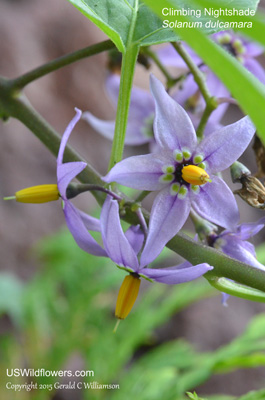
| | Site: Boise, Ada County, ID Date: 2011-June-11 | Photographer: Gerald C Williamson
Nikon D7000 | | The corolla lobes bend backward shortly after opening. The yellow stamens are usually fused into a cone with the pistil extending from the center. | | Click on the photo for a larger image
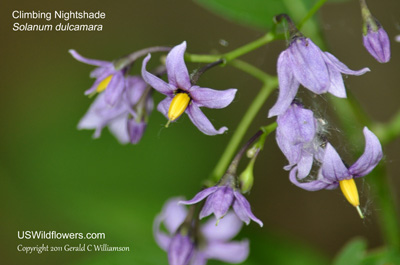
| | Site: Hell's Canyon Park, Adams County, ID Date: 2012-May-28 | Photographer: Gerald C Williamson
Nikon D7000 | | The leaves are petioled, and many will have a pair of smaller lobes at the base. The lower stems of the plant may form a woody shrub. The stems are glabrous to somewhat hairy. | | Click on the photo for a larger image
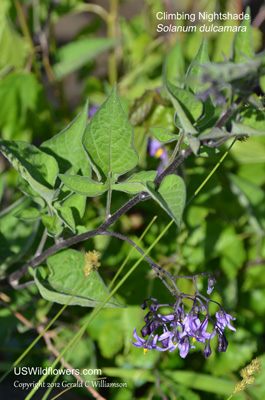
| | Site: Deer Flat National Wildlife Preserve, Canyon County, ID Date: 2010-June-07 | Photographer: Gerald C Williamson
Nikon D60 | | The upper part of the plant is a herbaceous vine which can reach up to 10' long. If the leaves do not have a pair of smaller lobes at the base, they will be cordate. | | Click on the photo for a larger image
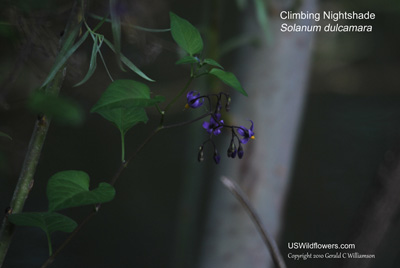
| | Site: Bell Cove of Lake Huron, Ontario, Canada Date: 2015-August-17 | Photographer: Gerald C Williamson
Nikon D7000 | | Many of the leaves will have a pair of smaller lobes at the base. The stems are glabrous to somewhat hairy. | | Click on the photo for a larger image
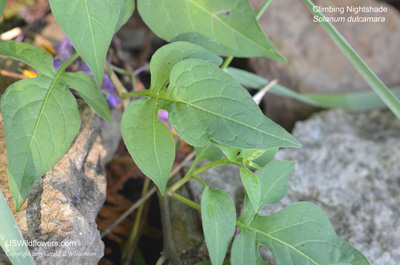
|
References used for identification and information:
|
|
| |
| #ad
|
|








